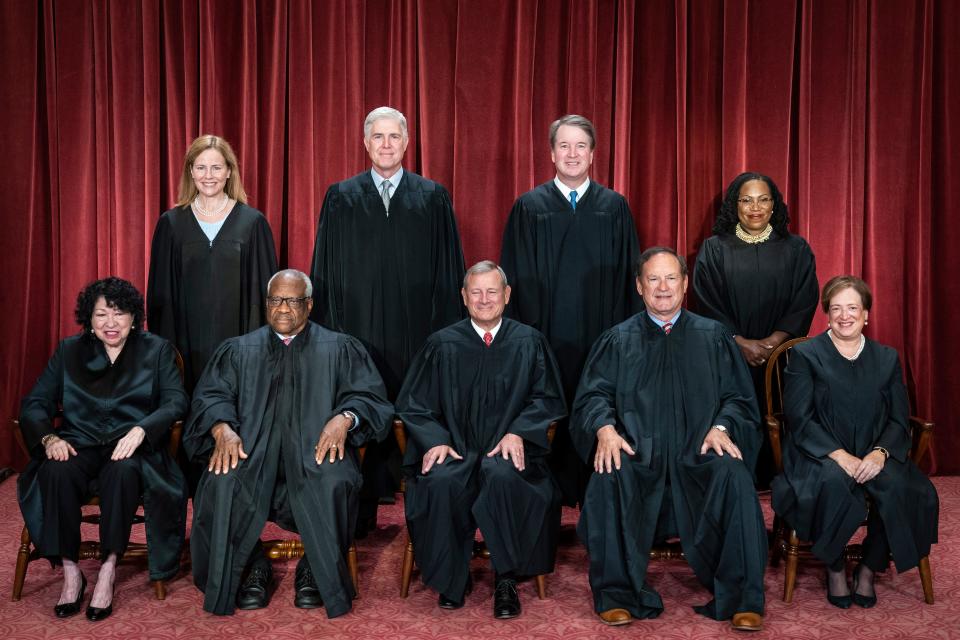Your cart is currently empty!

Supreme Court Dismisses Social Media Coercion Case
Background
On June 26, 2024, the Supreme Court dismissed a significant case that accused the Biden administration of coercing social media companies into censoring content related to COVID-19 and the 2020 election. The plaintiffs, GOP attorneys general from Louisiana and Missouri, argued that these actions represented a severe violation of the First Amendment.
Dismissal Due to Lack of Standing
The Supreme Court’s decision hinged on the concept of standing, which requires plaintiffs to show a concrete and particularized injury directly traceable to the defendant’s actions. The Court ruled that the plaintiffs failed to meet this requirement, leading to the dismissal of the case.
According to the Court, the plaintiffs could not demonstrate a specific legal injury caused by the Biden administration’s actions. The evidence provided was deemed insufficient to establish a direct injury affecting them personally. The court essentially determined plaintiffs struggled to show a clear causal link between the government’s conduct and the alleged harm. They failed to prove that government pressure directly resulted in the social media companies’ actions that purportedly harmed them. Additionally, the Court required evidence of an imminent threat of future harm, which the ruling inherently implies plaintiffs did not provide.
SCOTUS’s Expectation for Addressing Generalized Grievances
The Supreme Court’s decision indicates that broad public concerns, categorized as generalized grievances, should be addressed through other means rather than the judiciary. This raises critical questions regarding the accessibility of judicial remedies for widespread public issues and the efficacy of other branches of government in addressing these concerns.
How Our System Expects Us to Handle Generalized Grievances:
- Legislative Action:
- The Court suggests that individuals and groups should lobby Congress to pass new laws or amend existing ones to address broad public concerns. This expectation rests on the belief that legislative bodies are better equipped to handle widespread issues through comprehensive policymaking.
- Executive Action:
- The President or state governors can issue executive orders or direct agencies to update regulations. While this method allows for quick action, it also raises concerns about potential overreach and lack of accountability.
- Public Advocacy:
- Organizing and participating in grassroots movements and NGOs can help raise awareness and pressure public officials. However, this method can be slow and may lack the immediacy needed to address urgent issues.
- Judicial Advocacy:
- Filing amicus briefs in related cases and supporting plaintiffs with specific, direct injuries can influence judicial outcomes. While valuable, this approach may not always address broader systemic issues.
Conclusion
In a perfect world, this approach would have been successful before any lawfare was necessary. Unfortunately, Justice Samuel Alito, in his dissent, highlighted the implications of the Court’s dismissal in the absence of other immediately available remedies. He argued that this decision effectively gives the government a green light to use heavy-handed tactics to influence the presentation of views on social media platforms. Alito’s dissent underscored the critical nature of this case as potentially the most significant First Amendment issue in modern history. By dismissing the case on the grounds of standing, the Court has, according to Alito, failed to address a substantial threat to free speech and has left unresolved the critical issue of government overreach in moderating public discourse. It is important to consider that there are many other cases regarding government colluding with big tech to censor dissent waiting to be heard by the Supreme Court. Dismissing on a lack of standing is distinct from a dismissal on the merits. The number of cases approaching the same issue indicates that the issue will most likely be addressed on its merits eventually. That is unless the Supreme Court decides none of the plaintiffs in any of these cases have standing, which would be unprecedented.
Learn More:
- SCOTUSblog. “Supreme Court skeptical of restricting government communications with social media companies.” Retrieved from SCOTUSblog
- POLITICO. “Supreme Court to decide if Biden admin illegally bullied social media into censoring content.” Retrieved from POLITICO
- OFFICIAL RULING: Supreme Court of the United States. Retrieved from Supreme Court
- Washington Examiner. “Supreme Court split on White House contact with social media in censorship case.” Retrieved from Washington Examiner
- VOANews. “Court Blocks Order Curbing Biden Administration’s Social Media Contact.” Retrieved from VOANews
Supreme Court Dismisses Case Against Biden Administration’s Alleged Coercion of Social Media: A Critical Examination
Background
On June 26, 2024, the Supreme Court dismissed a significant case that accused the Biden administration of coercing social media companies into censoring content related to COVID-19 and the 2020 election. The plaintiffs, GOP attorneys general from Louisiana and Missouri, argued that these actions represented a severe violation of the First Amendment.
Dismissal Due to Lack of Standing
The Supreme Court’s decision hinged on the concept of standing, which requires plaintiffs to show a concrete and particularized injury directly traceable to the defendant’s actions. The Court ruled that the plaintiffs failed to meet this requirement, leading to the dismissal of the case.
According to the Court, the plaintiffs could not demonstrate a specific legal injury caused by the Biden administration’s actions. The evidence provided was deemed insufficient to establish a direct injury affecting them personally. The court essentially determined plaintiffs struggled to show a clear causal link between the government’s conduct and the alleged harm. They failed to prove that government pressure directly resulted in the social media companies’ actions that purportedly harmed them. Additionally, the Court required evidence of an imminent threat of future harm, which the ruling inherently implies plaintiffs did not provide.
SCOTUS’s Expectation for Addressing Generalized Grievances
The Supreme Court’s decision indicates that broad public concerns, categorized as generalized grievances, should be addressed through other means rather than the judiciary. This raises critical questions regarding the accessibility of judicial remedies for widespread public issues and the efficacy of other branches of government in addressing these concerns.
How our system expects us to handle generalized grievences:
- Legislative Action:
- The Court suggests that individuals and groups should lobby Congress to pass new laws or amend existing ones to address broad public concerns. This expectation rests on the belief that legislative bodies are better equipped to handle widespread issues through comprehensive policymaking.
- Executive Action:
- The President or state governors can issue executive orders or direct agencies to update regulations. While this method allows for quick action, it also raises concerns about potential overreach and lack of accountability.
- Public Advocacy:
- Organizing and participating in grassroots movements and NGOs can help raise awareness and pressure public officials. However, this method can be slow and may lack the immediacy needed to address urgent issues.
- Judicial Advocacy:
- Filing amicus briefs in related cases and supporting plaintiffs with specific, direct injuries can influence judicial outcomes. While valuable, this approach may not always address broader systemic issues.
Conclusion
In a perfect world this approach would have been successful before any lawfare was necessary. Unfortunately Justice Samuel Alito, in his dissent, highlighted the implications of the Court’s dismissal in the abscence of other immediately available remedies. He argued that this decision effectively gives the government a green light to use heavy-handed tactics to influence the presentation of views on social media platforms. Alito’s dissent underscored the critical nature of this case as potentially the most significant First Amendment issue in modern history. By dismissing the case on the grounds of standing, the Court has, according to Alito, failed to address a substantial threat to free speech and has left unresolved the critical issue of government overreach in moderating public discourse. Its important to consider that there are many other cases regarding government colluding with big tech to censor dissent waiting to be heard by the Supremem Court. Dismissing on a lack of standing is distinct from a dismissal on the merits. The number of cases approaching the same issue indicates that the issue will most likely be addressed on its merits eventually. That is unless the supreme court decides none of the plaintiffs in any of these cases have standing, which would be unprecedented.
Bibliography
- SCOTUSblog. “Supreme Court skeptical of restricting government communications with social media companies.” Retrieved from SCOTUSblog
- POLITICO. “Supreme Court to decide if Biden admin illegally bullied social media into censoring content.” Retrieved from POLITICO
- OFFICIAL RULING: Supreme Court of the United States. Retrieved from Supreme Court
- Washington Examiner. “Supreme Court split on White House contact with social media in censorship case.” Retrieved from Washington Examiner
- VOANews. “Court Blocks Order Curbing Biden Administration’s Social Media Contact.” Retrieved from VOANews

Leave a Reply